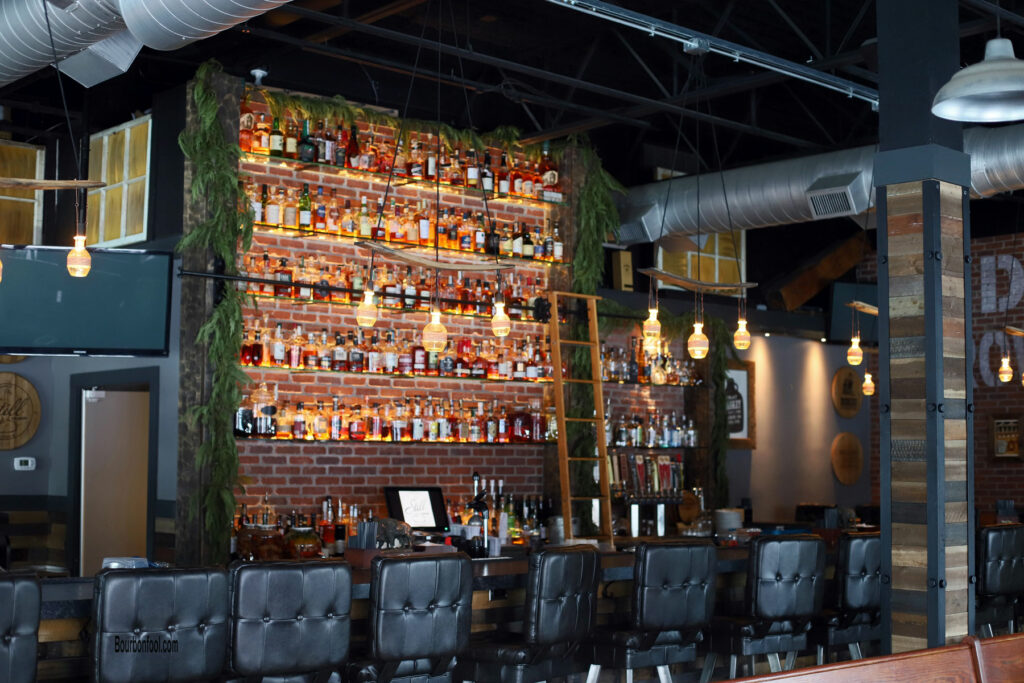Most people, who visit bars regularly, do not know why it is called a bar? The origin and customs of your favorite bar can be traced back to colonial America. These American establishments were called public houses and taverns. As time progressed, a drinking establishment could also be known as a saloon, speakeasy, blind pig, watering hole, pub, and even inn. Just not a bar. Not yet.
You will notice that the word bar is absent when talking about early drinking establishments. The history of your favorite bar dates to pre-revolutionary America and Europe before the early American settlements. These were the pre-whiskey days and, of course, pre-bourbon for sure.
Public House
English Public Houses, or Pubs as they became known, were established in Europe and were imitated in America. These pubs or taverns were usually a way station to receive travelers and offer them food and drink for a price. The establishment was known to serve alcohol, and many housed stables to tend to the horses of travelers.
During the 1800s, Public Houses, inns, and taverns were considered socially superior to the more common term of alehouse or ginshop.
Early American Taverns
During the eighteenth century (1701 to 1800), the Public House was an essential part of Early American life. They were often one of the most significant buildings in a community and usually the only public building in a town. These public buildings were often built next to a courthouse and became a gathering place. Before a trial, it was possible to see the judge, jurors, defendants, and attorneys enjoying a drink. Often, these meet-ups resulted in a problem being “settled out of court.” There were city and country taverns. Some city taverns could be elegant and offer both rum and Madeira. Country taverns would often be dirty and feature lousy food and poor beverages. Public House operators were often informal postmasters who often named their business colorful and whimsical names. Keg of Nails, Pink Pony, The Eagle, and Child are examples of pub names. Copying signs found on English pubs, the taverns often painted bright and colorful characters on their signs so that they could be seen and located by the illiterate.
Community Gathering Places
Pubs and taverns were much more than drinking establishments. Early taverns held political meetings, and local militia groups would use them as headquarters. Politicians would purchase alcoholic beverages in return for a favorable vote.
Why it is called a bar?
No, it does not stand for beer and alcohol room. In early colonial days, the local tavern operator was often a widow, and the tavern was a form of community assistance. Often, the saloon keeper or proprietor was the only person that worked in that establishment. Their serving area would often be in the corner of the room to allow tables and chairs to fill the space. If they had to leave the building to tend horses or bring in stock, they would lower a set of iron bars that would protect the alcohol from the patrons in their absence.
Often people talk about the bar that runs along the bottom of the counter as a footrest. However, keeping people from stealing products by barring them from the alcohol stock was the origin of the term bar. The term came from a set of iron bars suspended from the ceiling and lowered to secure spirits when necessary. The iron bars secured the liquor. There are historical taverns that still have the hinged hardware on the ceiling used to hold the bars in place. You can see this at the historic Colonial Inn in Concord, Massachusetts.
Similarities to your bar
Early American taverns were licensed by the government, as were modern bars. Often, there were restrictions in place that would limit how much you could drink on a given day. Think of that as an early type of “Last Call.” Local governments began licensing additional bars to raise revenue for local improvements. This practice continues today. However, unfortunately, bourbon would not have been served until later, with the drinks of the day being beer, rum, and local cider. Remember that colonial America faced the Atlantic Ocean, which made trading goods with the Caribbean common with an emphasis on rum and molasses. Bourbon is not front and center in this blog post. However, every time you enjoy your favorite bourbon at your favorite bar, you now know the history of how that bar came to exist. Cheers!

To watch our newest video on What’s New at Charlie’s, click HERE.